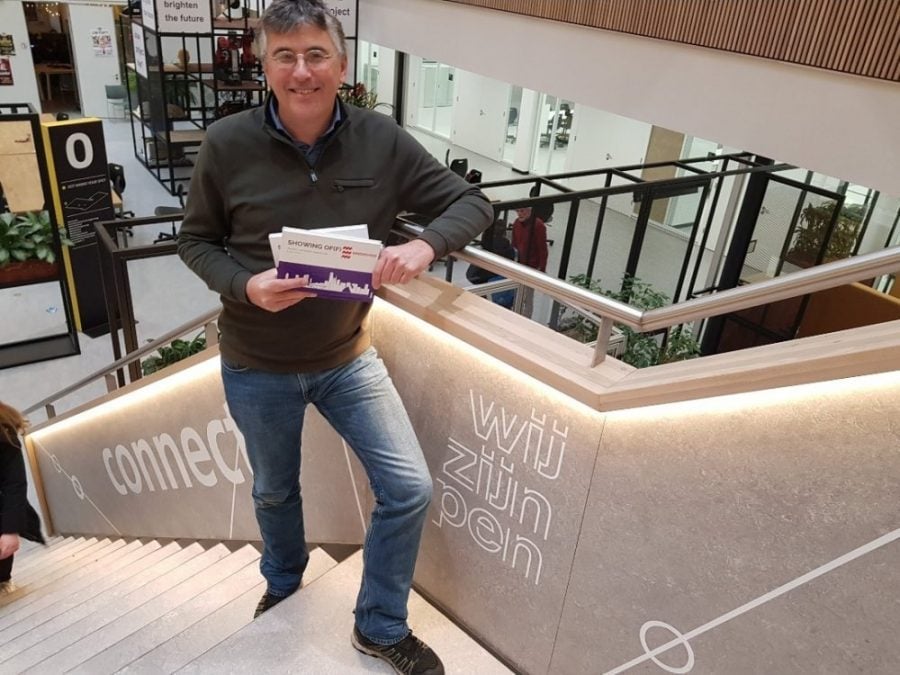
Eugène Franken has been working at his own architectural agency Architectenburo Franken for 27 years. Alongside his career in architecture, he also works as the secretary for the Stichting Landgoed Kasteel Geldrop (Geldrop Castle Country Estate Foundation). With two books to his name, he already has the requisite experience when it comes to writing. His first column will be online this weekend on Innovation Origins.
When did your passion for architecture first start?
“My father worked at an architectural firm where he designed a lot for Philips. He was an all-rounder and also helped with planning the construction. As a little boy, I was allowed to go with him. My father was also involved in innovation in those days. A major difference between us is that my father was much more technical. I myself am far more culturally inclined.”
You have already written two books. The first was on the history of Geldrop Castle. Your second book Showing Of(f) Eindhoven is about architecture in Eindhoven. What do you consider the worst building project in Eindhoven?
“I find that Parc Fontaine is a terrible project. This is a luxury apartment complex in the city park. The awful thing about this project is the name. Fontaine was the head of urban green spaces in Eindhoven. He had flats built in the park. These don’t have their own garden but basically the park is their garden. He really wanted to keep the park green. Parc Fontaine is not about this at all. The apartments have a huge garden with a high fence surrounding them. That way, you completely lose sight of Fontaine’s idea.”
There is undoubtedly some beautiful architecture in Eindhoven as well. What do you think is the best building project in Eindhoven?
“By far the best project in Eindhoven is the Domusdela. This used to be the parish church. This building is owned by the Dela funeral home, it is now, among other things, a ceremonial center. This is the place where Eindhoven stemmed from. It is therefore a very important place. It has really beautiful architecture which has a great deal of significance. You should definitely go and see it.”
What do you think are the most interesting innovations in the field of architecture today?
“There are so many but I think that the greening of architecture is really interesting. An example is roof parks. You use a flat roof, space you wouldn’t use otherwise, for a lot of greenery. A beautiful roof park is the one in Rotterdam, which is one of the largest roof parks in Europe.”
What kind of innovations do you think are coming to architecture and construction?
“I think globalization will be a major theme, as well as robotization, of course. Construction is an incredibly archaic industry. The way buildings are put together now is the same as it was five years ago. It will not stay that way. For example, so far, there isn’t a factory that can fabricate buildings on a large scale. 3D printing is also likely to be developed even further.”
One advancement concerning 3D printing and architecture is the printing of buildings with concrete printers. Do you think this will be taken further?
“Concrete printers don’t work at all. You see all the layers sitting there and there is a flexibility factor of zero. 3D printing is going to progress, except just not with concrete. Maybe in twenty years’ time, a facade will just be projected on a house, then you can choose a new facade every morning. Wood will be rediscovered. Wood is a fantastic building material. It traps CO2, for example. At the moment, more and more timber is being used in construction, yet this will become increasingly more widespread.”
Will developments in architecture mainly take place revolving around materials?
“No, I think circular construction indoors will be key as well. Lime is an example. Lime works a bit the same as concrete, but if you break it down it can be used as a soil enricher. Obviously, plenty of developments will take place related to the building process as well.”
“I am often someone who is ahead of the curve. Right now, I can predict something that will be true in twenty years’ time. There is still an awful lot to be gained in the field of sustainability and architecture. For one thing, plenty of things that appear to be sustainable aren’t actually quite that as yet. Soon there will be a column from me about sticky rice and lime as construction materials, I’m not going to give away too much about this for now.”
Also interesting:
Polder roof on Dutch uni serves as an innovation lab for climate-proofing buildings
Europe’s first industrial 3D concrete printing facility is located in Eindhoven

